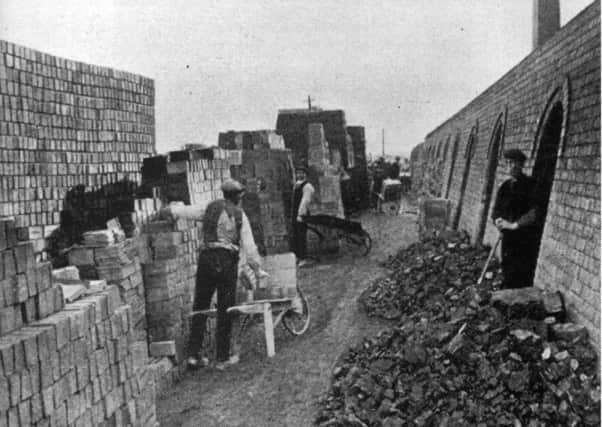Stein's '“ a success story built with bricks


The mining of fireclay and the manufacture of heat resistant ‘refractory’ bricks gave employment to thousands and survived until well through the 20th century. The name most closely associated with the business was the famous company founded by John Gilchrist Stein which came to dominate all others.
There were already quite a few firms making these specialist bricks using locally mined clays and it was at one of the most successful, the Bonnybridge Silica Company owned by Azariah Griffiths, later Provost of Falkirk, that the young John Stein began his career as a salesman around 1882.
Advertisement
Hide AdAdvertisement
Hide AdHe had already learned much about the brick business from his father in Clackmannanshire and elsewhere but now had the chance to meet customers and build up his contacts.
He was a determined and shrewd operator typical of the Victorian entrepreneurs who were driving the industrial revolution forward. Alert to opportunities, ahead of the game when it came to new technology and ready to risk his limited capital, John set up his own business in 1887 in partnership with the Falkirk ironmaster (and another Provost) Malcolm Cockburn. They acquired the rights to mine fireclay at Milnquarter in High Bonnybridge and began manufacturing firebricks the following year. It was the beginning of the great expansion.
He experimented with new machines that produced thousands of bricks stealing a march on his rivals and earning good returns for the company.
By 1896 he had bought out his partner and three years later expanded the business to Castlecary in due course building the rows of red sandstone cottages at the new village of Allandale (named after his son) to house the employees.
Advertisement
Hide AdAdvertisement
Hide AdA good example of John Stein’s entrepreneurial flair was the Anchor Brick Works in Denny. In 1896 he noticed a large bing of waste left over from ironstone mining near the Anchor Burn.
Realising that this mixture of fire clay and ganister could be used to make building bricks he secured a lease and within a year tens of thousands of bricks were leaving the works each week and special brick making machinery and steam engines were in operation.
Bricks cost ten shillings per thousand to make and Stein sold them for 20!
In 1921 they were used in the building of Gleneagles Hotel.
By the turn of the century John Stein’s sons were playing an increasing role in the business particularly Colonel Alan Stein, who though seriously wounded in the First World War (his brother Colin died at Ypres), went on to run the company after his father’s death in 1927 and to play a major part in the life of the community.
Advertisement
Hide AdAdvertisement
Hide AdBefore his death John had overseen the new development at Manuel on the other side of the district which began manufacturing in 1930. In due course it became the largest firebrick works in Europe producing 200,000 tons of bricks each year and employing over 1000 men and women.
However, the steady decline of the iron industry in the 1960s as well as overseas competition brought about the closure of the claymines and the merger of the manufacturing plant with others. First it was General Refractories, the long time Stein rival, and then Hepworths two years later in 1969.
Today all the sites are derelict and the family home at Millfield, Polmont is long gone. Only the Allandale houses and the occasional building brick marked ‘STEINS’ survive to remind us of a great man and the empire he created.